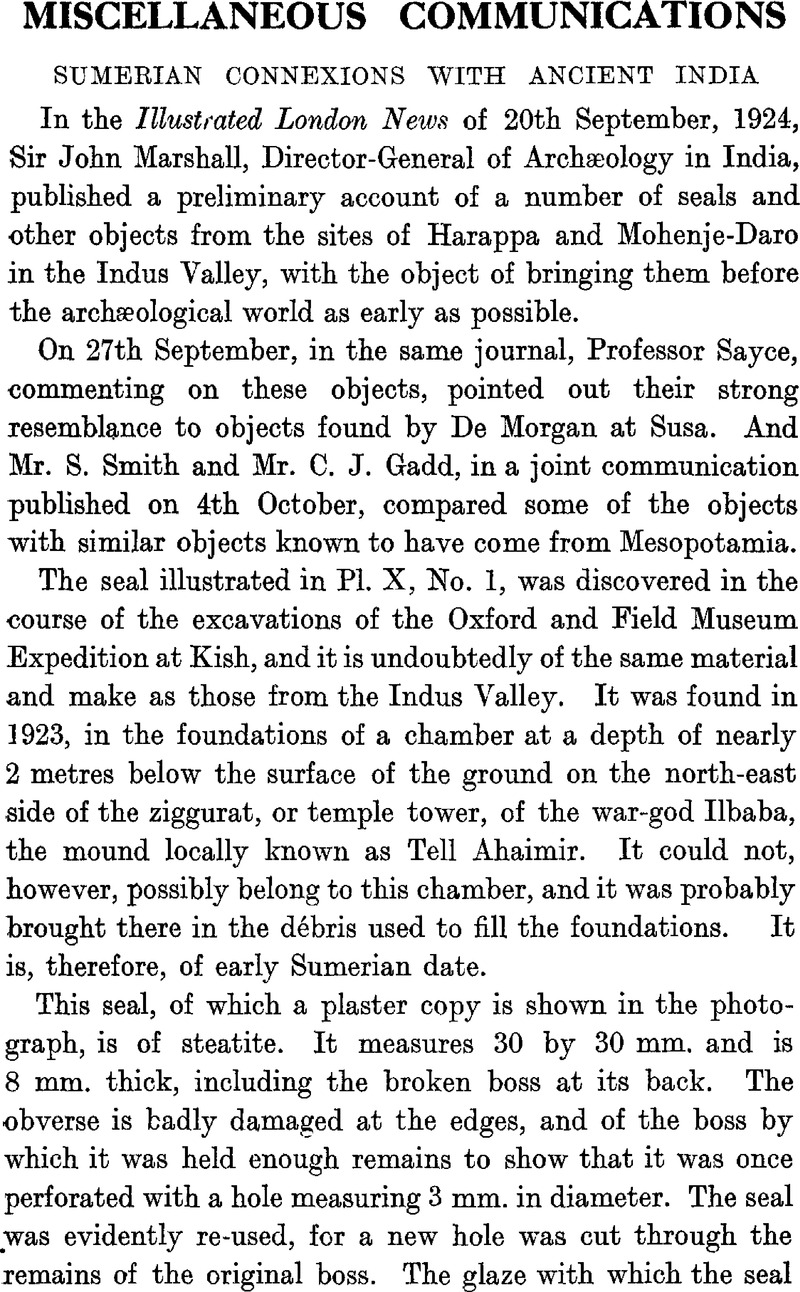Published online by Cambridge University Press: 15 March 2011

page 698 note 1 Pl. X, Nos. 2 and 3.
page 700 note 1 The hardness of lapis lazuli is 5·5 and that of carnelian 7.
page 700 note 2 Lapis lazuli is a common stone in Persia. De Morgan in his Mémoires sur la Délégation en Perse, vol. viii, p. 53, states that lapis lazuli was originally worked near Kashan, but that the site of the mine is unknown. The mount Bilki, which according to an Assyrian record was a mountain of lapis lazuli, may perhaps be identified with Mount Demavand, which is not far distant from Kashan.—P. M. Sykes, History of Persia, vol. i, p. 36.